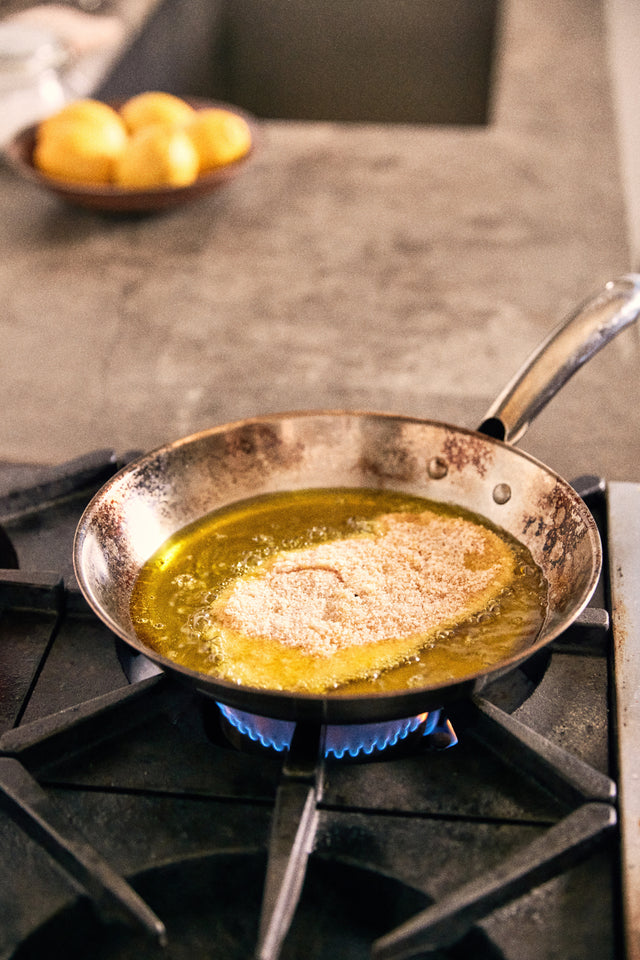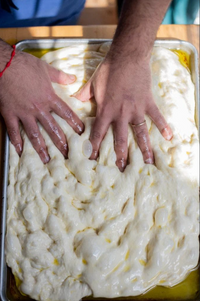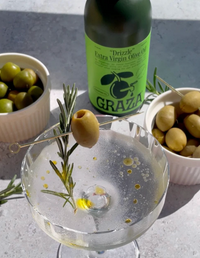
Oil Smoke Point: What Is It and Does it Matter?

Don’t let smoke point confuse your cooking! Let it rip with Graza! We can handle the heat!
What is a smoke point?
Smoke point is a physical measurement, defined by researchers as the temperature (under lab conditions) at which an oil begins to emit visible smoke when heated. It is frequently cited as a reason not to use extra virgin olive oil at higher heats and correlated with claims of health concerns. Research in more recent years has shown that smoke point does not correlate well with the changes in chemical composition of an oil as it heats up.
Basically, they say “olive oil can’t handle the heat". We say...
“Neapolitan pizza ovens have been cranking pies at 1000 degrees for centuries!!”
How do you get a higher smoke point?
You chemically REFINE the oil! This means a series of chemical processes that removes a lot of the nutrients that we love in olive oil, neutralizes the flavor, and gives it a longer shelf life. It also has more recently been shown to generate some undesirable chemical compounds that may be linked to health issues. When you refine anything (olive, oil… avocado oil… canola oil…) you get a higher smoke point, because you are essentially pre-cooking the oils.
What are some different oil’s smoke points?
Sizzle Extra Virgin Olive Oil: 410°
Canola Oil: 400°
Unrefined Avocado Oil: 430°
Vegetable oil: 400-450°
Peanut oil: 450°
So what’s the deal?
Smoke point is WAY LESS important than oxidative stability.
We think that smoke point is not what you should be worrying about when it comes to cooking oil. Instead, focus on oxidative stability, antioxidants, and level of refinement. Olive oil is primarily made of monounsaturated fatty acids (MUFAs!), which contain only one double bond and are most stable at high temperatures. Sizzle and Drizzle are made from the picual olive, which has a higher stability than other varietals when heated because of super high levels of MUFAs, antioxidants, and polyphenols.
We love MUFAs!
Smoke point is more of a marketing mechanism than a health concern. An oil’s smoke point does not correlate to its performance and stability when heated. Rather, the factors that predict an oil’s safety and stability at high heat are the percentage of polyunsaturated fats (the lower the better), and the extent to which the oil has been refined (the less the better). Extra virgin olive oil, which has a low concentration of polyunsaturated fat, and is not refined at all, proves to be the best (and tastiest we think!) oil for cooking.
So let it rip! We do.
Further reading we recommend:
Extra Virginity by Tom Mueller - required reading for team Graza, a fascinating deep dive into the industry, history, and health benefits of olive oil
Smoke Point Not a Reliable Indicator of Cooking Oil Stability from the North American Olive Oil Association
Evaluation of Chemical and Physical Changes in Different Commercial Oils during Heating from ACTA Scientific Nutritional Health Journal
Refining Vegetable Oils: Chemical and Physical Refining by Said Gharby from The Scientific World Journal
Cooking with Olive Oil from the Olive Wellness Institute
What are MUFAs? from the Mayo Clinic

















